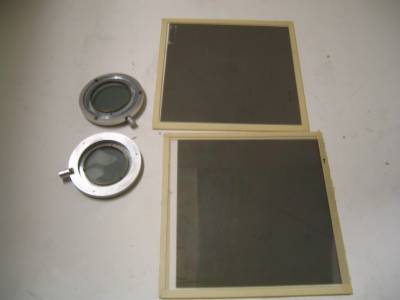User Tools
demonstrations:6_optics:6h_polarization:polarized_light:start
Table of Contents
Polarized Light
Description
Polarized light.
Purpose
- To demonstrate the use of polaroid to produce polarized light.
- To demonstrate rotation of a pane of polarization.
- To demonstrate double-refraction with a calcite crystal.
Apparatus
Two 10 inch polaroid filters, assorted smaller polaroid filters, lucite nutcrackers, prepared cellotape sheet, calcite crystal, 35 mm projector and 3 mm aperture metal piece
Setup
- Using the overhead projector the two polaroid filters can be placed on the projector and turned.
- A large sheet of criss-crossed cellotape strip can be placed between crossed polaroids in the projector and rotation of the strip or of a polaroid will give a variety of colour changes in the cellotape strips.
A piece of lucite in the form of a “lucite nutcracker” can be placed between crossed polaroids. Squeezing the arms of the nutcracker will produce strain patterns.
* Use a transparency with printing on the overhead projector and lay the calcite crystal over the top of the printing. The double refraction can be seen and rotation of the crystal rotates the image of the extra-ordinary ray about the image of the ordinary ray. * Now use the 33 mm projector with a metal screening piece and a 3 mm diameter hole in the slide holder. Place the calcite crystal in front of this (a piece of folded paper holds it at the correct height). A double circular image can be focussed on the screen. A polaroid filter can now be rotated in front of the projector to show that two circular images are polarized at right angles. * The polaroid effect is demonstrated in the pictures below. It is not extremely clear, but in the bottom photo the polaroids are darker than in the other photo. Updated on: 06/13/13
Notes
Demo room information
| Location | B4 |
| Maker | Unknown |
| Current State | Working |
demonstrations/6_optics/6h_polarization/polarized_light/start.txt · Last modified: 2020/03/13 20:59 by demoroom

